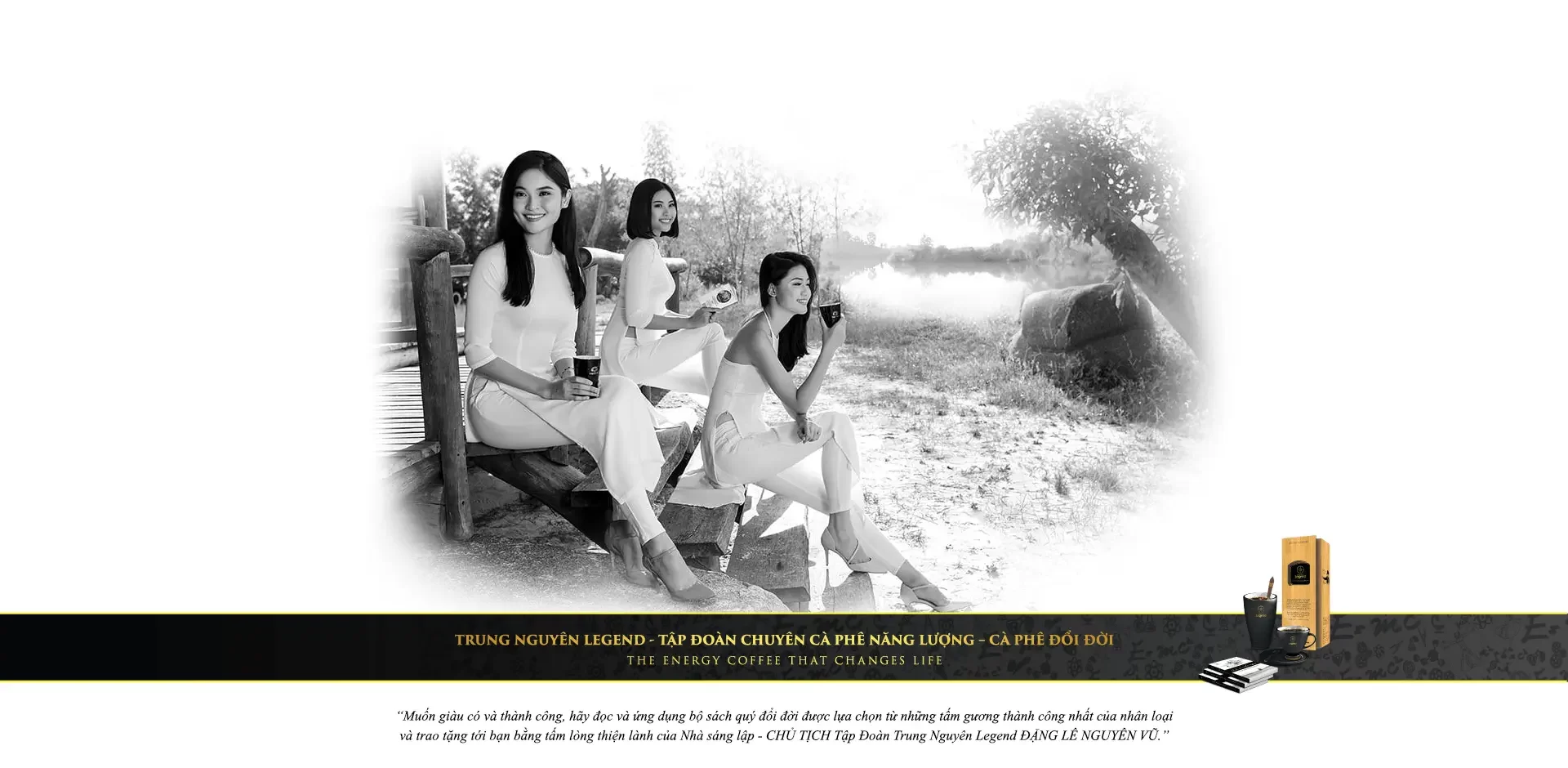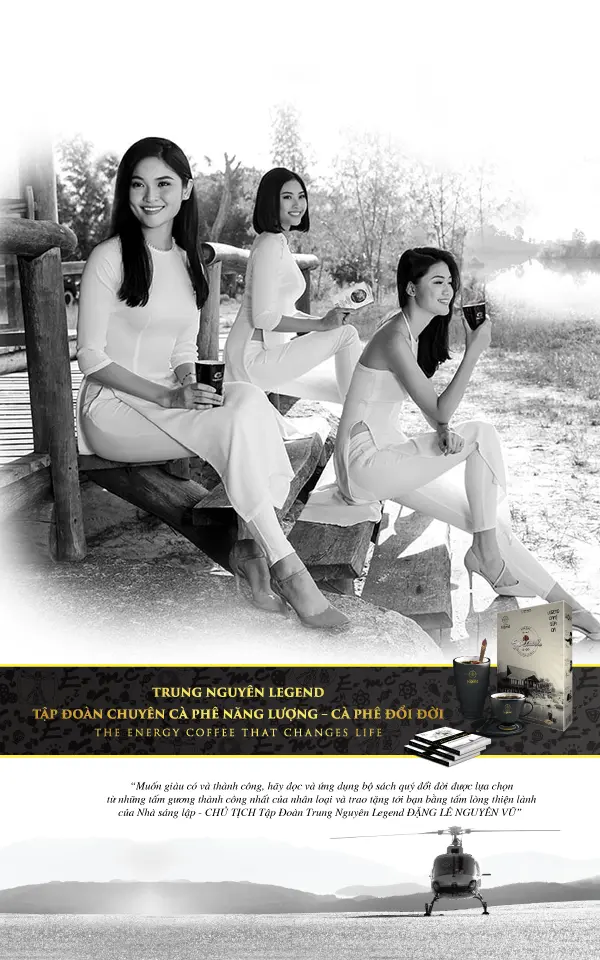Article 61: Ernest Miller Hemingway and the literary masterpieces written in the coffee shop
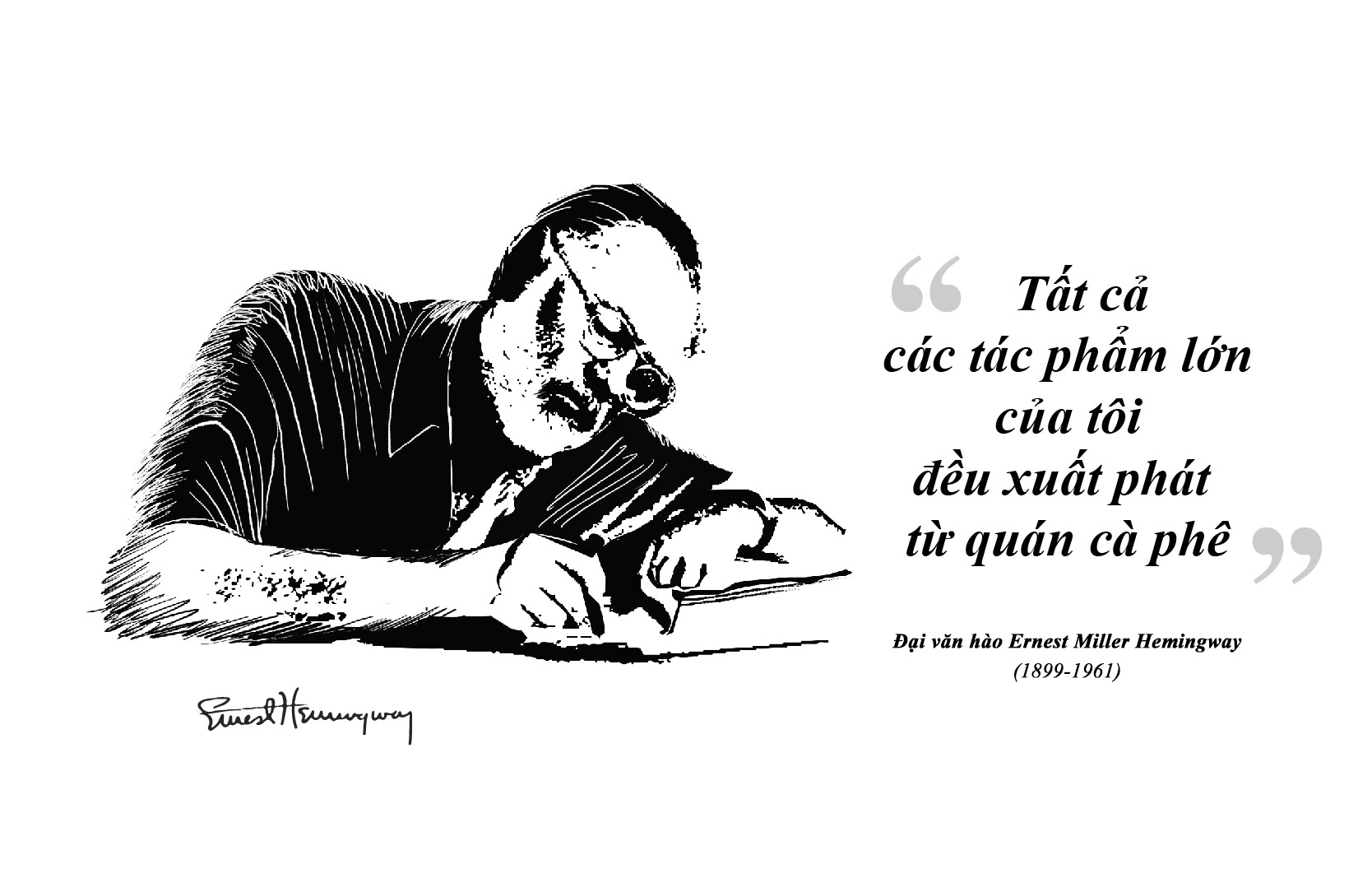
“All my great works came from café.” Ernest Miller Hemingway (1899 – 1961)
The cafe is also known as the “Public-looking Place”, a place of self-expression. And that also greatly affects the process of empathy and self-worth promotion.
Coffee shop – a place that represents the lifestyle of the times
In the 1970s there were many studies on the social significance of coffee shops. Most experts agreed that a coffee shop was a space with cultural symbolic value, affecting the formation of aesthetic thinking and art-society trends.
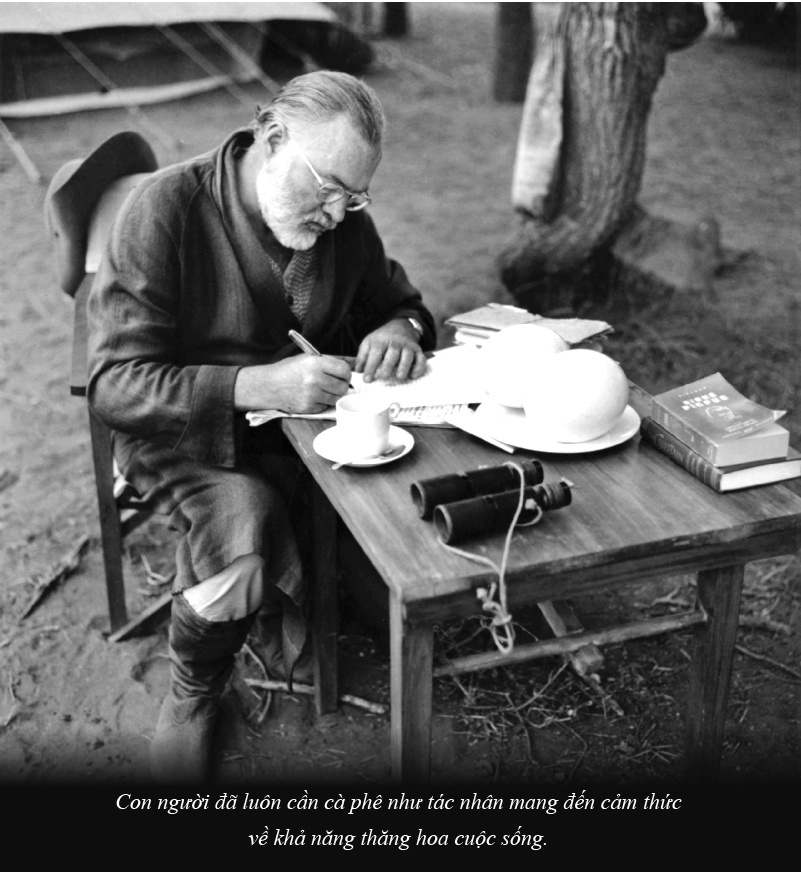
People have always needed coffee as the agent that brings a sense of the ability to sublimate life
The cafe space is originally a place for people to go there and express their desire to exist and own. People come to coffee shops not just to enjoy coffee. Being present in the cafe space also reveals the lifestyle and ego of each person. Because of that, the way each coffee shop operates will attract certain customers
For example, those types of “Readings Coffee” cafes were the place to show new works or ideas to the public, mostly a meeting place for elite intellectuals, academic experts, and erudite people… The “Street Alternative Coffee” types created a cultural playground for young people to express themselves; “Gated Communities Coffee” was the center of community activities in the ward; The “Coffee Party Movement” brought together civilians who wished to present their recommendations to current issues; “Café Design” focusing on displaying artworks from sculpture, painting to photography and architecture was the place where dreams of talented artists were cherished …
In this respect, the selection of the type of coffee shops is a method of positioning. Exhibitors will match the space to express the cultural values and ideals they aspire to, helping them to express the identity they desire. The “Me” stays there, having “my” thoughts explained, interacting with other “Me’s” – expressing “my” perception, “my” style. Interactions between egos lead to the process of facing right and wrong in thinking, understanding oneself, seeing one’s position in life. This is the factor that creates the basic conditions for the process of ego growth, towards perfection to achieve the ideal self.
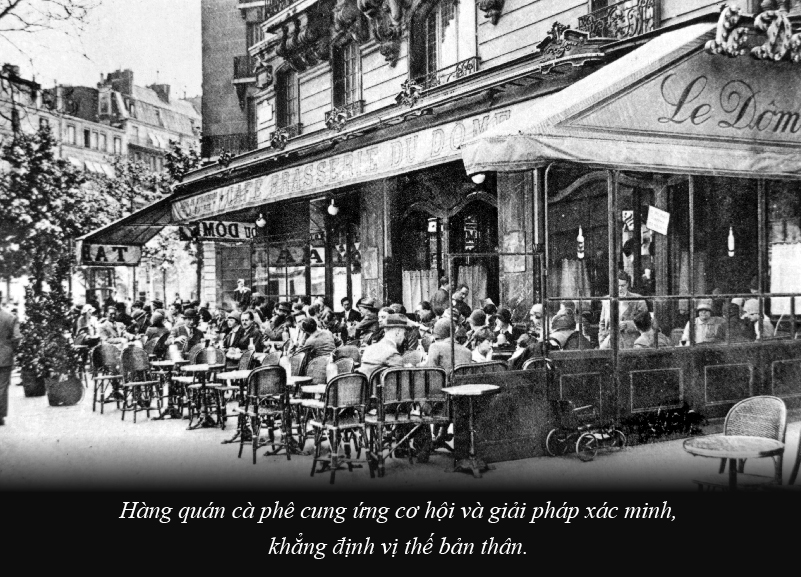
Coffee shops provide opportunities and solutions to verify and assert personal positioning.
From the role of “Public-looking Place”, the coffee shop in one way or another was involved in the cultural and community environment of the areas in which the coffee shop existed. Invisibly, the coffee shop had become a contributing agent to promote the characteristics and identity of community ecology. It could be seen that the coffee shops in Montparnasse or Saint-Germain-des-Prés in Paris were recognized as “the soul of the city”; Greenwich area in Manhattan (New York) honored the coffee shop as a “voice of the community”; Cafes in Le Carré area (Liège, Belgium) were recognized by the local government as the “sacred soul of the city”…
If there were no coffee shops, there would be no priceless works
Ernest Miller Hemingway lived during the period when coffee shops flourished in America and Europe with many diverse types. He explored and praised coffee shops as “symbolic spaces” rather than geographically conventional meanings. By describing a sequence of behaviors and stories felt over a cup of coffee, Hemingway clarifies contemporary moral values and aspirations.
A prominent feature in Hemingway’s literature is the multidimensional structure of the iceberg principle. Semantics do not stop at the level of expression form, but also convey the author’s personal outlook. The central character in Hemingway’s works is often characterized by Stoicism – people who believe that the way to happiness (Eudaimonia) will be found through the use of knowledge, to understand the world and do what they need to do, contribute to the plan that nature has drawn up.
With that different thinking, Hemingway valued the creative space to be able to develop ideas. He often sat for hours in the cafe. Enjoyed coffee, read books, observed and created. Hemingway’s most famous cafes included La Rotonde, where he could meet writers Scott Fitzgerald, Gertrude Stein, Thomas Stearns Eliot to discuss new ideas; Café des Deux Magots “headquarters” of the Surrealists; Café de Flore with its literary promotion activities with its own Prix de Flore; Café du Dôme “station platform” of the immigrant community from Central Europe and North America; La Closerie des Lilas was lodged into literary history as Hemingway’s second home…
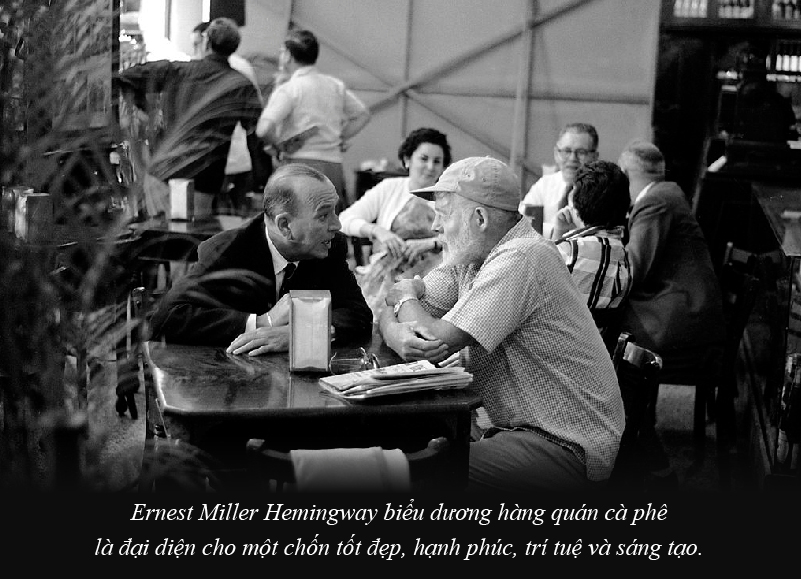
Ernest Miller Hemingway praised the coffee shop as representing a good, happy, intellectual and creative place.
Cafes appear in many of Hemingway’s works as the physical embodiment of an ideological system, a space whose metaphysical qualities are expressed through the activities taking place within, bringing to the reader the experiencing the meaning of life. Hemingway once wrote the cafe as “a place full of light”. Light is not just physical light. The light shining in the space of the cafe is a symbol representing a good, happy, intellectual and creative place – where everyone aspires to belong. Where people go to seek change, where they have the courage to confront the darkness of fear, evil, unhappiness… to acquire happiness.
“Symbolic space” is most evident in classic works such as “A Clean Well-Lighted Place”, “The Sun Also Rises”, “A Moveable Feast” … In his first full length novel “The Sun Also Rises”, the cafe serves as the overall trajectory of the story and the setting that initiates the process of changing the protagonist’s moral perception. In the last novel “The Old Man and the Sea” – the culmination of the Nobel Prize in Literature in 1954, the old fisherman went out to sea with all the food for a day being coffee, and it was the drink the old man knew to drink before fulfilling his great ambition of conquest.
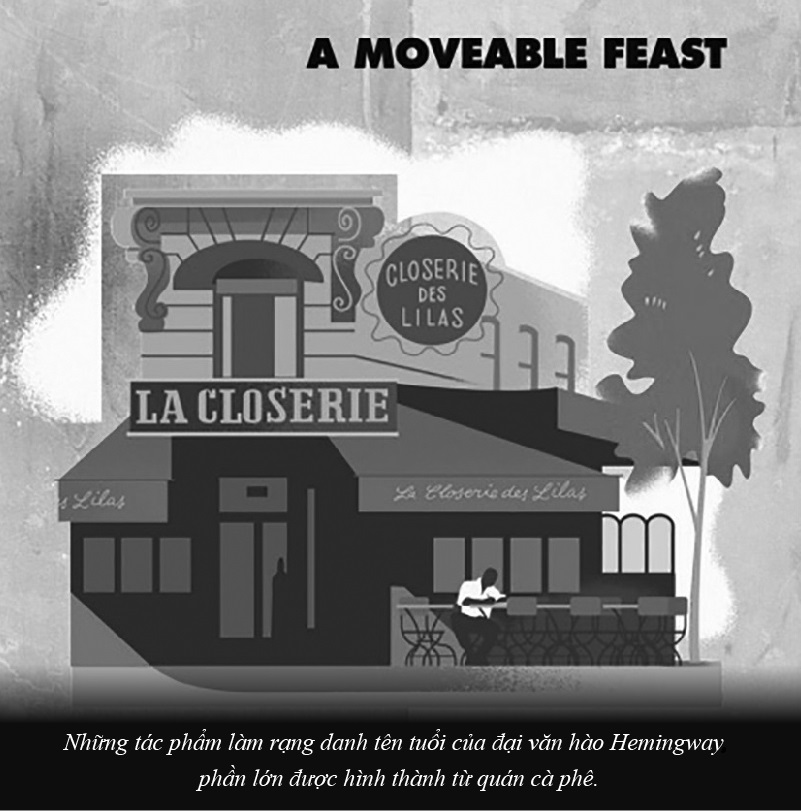
The works that glorify the name of the great writer Hemingway were mostly formed from coffee shops.
Most of Hemingway’s masterpieces were also conceived or finished in the cafe. In other words, the coffee shop has become a major part of the intellectual life and the center of creative promotion of great writers. Going to the coffee shop thus became “Hemingwayesque” – typical of the Hemingway’s lifestyle.
And Ernest Miller Hemingway is famous in the world as one of the greatest and most influential writers of the 20th century. Not only rewarded with the Pulitzer Prize and the Nobel Prize for Literature, his philosophy of life and creativity also left significant marks in art, cinema, became a model for countless other writers. A small planet discovered in 1978 and a crater on Mercury have been named after Ernest Miller Hemingway in honor of his great work.
That is one of the reasons Trung Nguyen Legend chose the great writer Ernest Miller Hemingway as one of the great celebrities who inspired to create masterpieces of energy coffee, as well as an inspirational character for those who love coffee when coming to Trung Nguyen Legend’s coffee houses – “Street Academy” and “The convergence of great souls who want to change life of the times”. It is also the wish that each person, when enjoying a cup of coffee with a panacea for the creative brain with precious books from the Life Changing Foundational Bookcase will awaken the inner strength in each individual, thereby the desire to create and position themselves with great achievements in life.
THE REAL COFFEE
ROASTED ONLY FOR PEOPLE OF WISDOM!
Source: “The Philosophical Way of Coffee” – copyright by Trung Nguyen Legend

